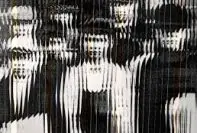Social Facilitation Theory can be broken down into two parts, Social Facilitation Effect and Social Inhibition.
Social Inhibition refers to the inability of people to perform complex or unfamiliar tasks in the presence of observers or competitors.
Social Inhibition Examples
Example 1: An student failing to give a presentation in front of the classroom knowing he is being evaluated.
Example 2: A learner failing the driver’s license test.
Both of these examples show that the participant is unable to perform the said task in presence of others because of the complexity of the task and their unfamiliarity with it.
What is Social Inhibition?
The conscious or subconscious avoidance of any situation involving social interaction can be defined as Social Inhibition. An individual with high level of Social Inhibition avoids social situations because of the possibility of someone disapproving their expressions.
The processes that come into play in order to cause high levels of social inhibition can be withdrawal, social anxiety, avoidance, evaluation concerns.
At the same time high level of SI can also be related to cognitive brain patterns, negative apprehensions to social situations and internalizing problems.
Due to these reasons, social inhibition have been found to be closely related to social interactions, appearance, behavior and the subject matter of discussion.
Likewise, when it comes to characterizing social inhibition as a personality, it falls closely to the interpersonal dimension of Introversion/Extroversion. (Read: The Big Five Factors Model of Personality – Extraversion)
Even though a person might have low levels of Social Inhibition (SI), certain situations may trigger the individual to be more inhibited.
Social Inhibition in itself is not detrimental in low levels; however, when there is high level of social inhibition, he/she might go on to develop other social disorders, most notably Social Anxiety Disorder and Social Phobia.
Development of Social Inhibition Over the Lifespan
Social Inhibition can develop over a lifespan. The case of inhibition however can differ from one person to another.
Infants and Children
In infants and children, social inhibition is recognized as a temperament style where the children responds negatively, withdraws from unfamiliar people, situations, objects, and seeks protection.
The behavior relating to withdrawal and avoidance can be seen at a very early age, in fact researchers (Fox and colleagues) discovered that children can show signs of inhibition to visual and audio stimuli at the age of 4 months old.
Follow up results showed that children who showed early signs of inhibition continued to show behavioral inhibition at the age of two.
Not every child show the same signs of withdrawal or inhibition, and the factors causing those can also be different. Caregivers can affect social inhibition of a child, however they are not solely responsible.
Although researchers haven’t been able to agree on a certain kind of parenting style that would be beneficial for socially inhibited children, there is a hypothesis that such children would benefit from firm parenting styles.
Adolescents and Adults
Children who have been found to be socially inhibited are also seen to have developed social disorders during adolescence and adulthood.
Anxiety related problems are quite common in adolescence and they show the similar signs, such as withdrawal from unfamiliar situations, people or objects.
Adolescents are more aware of their surroundings and researchers argue that they might even be self-handicapping themselves from social interaction. This is also a form of social inhibition, and so there can be numerous different factors causing it.
In adulthood, the cases of social inhibition are hard to comeby, and although there hasn’t been enough research into it, psychologists see social inhibition in adulthood as something that happens through development.
Different Contexts for Social Inhibition
Two major contexts where social inhibition has been studied are schools and workplace, and that’s because cases of social inhibition are easily visible due to large number of people here.
Schools
School is a place where children are facilitated with social interactions, but that is also where they uncover adjustment problems.
Inhibition can cause learning problems and developmental issues. However, various research shows that culture also plays an important role in how others handle social inhibition.
In a study done in Chinese schools, it was found that Chinese students who were socially inhibited were even expected to be that way by teachers and parents and they showed no signs of later learning problems.
In fact those children were in fact associated with peer liking and positive school attitudes.
However, western children with social inhibition had tougher time, as schools generally expected everyone to be socialized and expressive.
Despite the difference in culture, similarities were seen while assessing gender. Boys were more antagonistic in peer reactions whereas girls were cooperative.
Workplace
A research was conducted in a laboratory setting to measure social inhibition.
It showed that participants showed signs of inhibition through controlled body/hand movements and measured vocal expression when there were other people in the room, even though other people didn’t so much as look at the participant.
This shows that mere presence of others can inhibit an individual in social situations.
How is Social Inhibition Lowered?
Alcohol
Researchers have identified that social inhibitions are lowered by alcohol.
A common example of this would be an individual who refrains from social participation suddenly becoming friendlier and more expressive to the point of being aggressive and violent after consuming alcohol.
Power
Social inhibition can be lowered by means unrelated to the actual situation. Attainment of power is one such means.
When an individual feels powerful or invincible their confidence level is elevated and they might even feel they are above (petty) social consequences, causing them to act in ways that are unfamiliar with a socially inhibited individual.
On the other hand, failure to attain power, or the sense of losing power can do just the opposite and increase the level of social inhibition.




